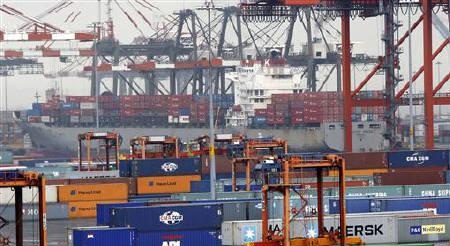
by admin | May 25, 2021 | Commodity Market, Investing, Opinions
 By Taponeel Mukherjee,
By Taponeel Mukherjee,
Investments by countries to secure strategic financial and regional advantages have been strategies for a long time. In the face of rapidly changing geopolitical dynamics, a renewed push by India to secure crucial consumption supplies through partnering with trading nations is an area that requires attention.
India’s role will be both as a trading partner as well as a partner in infrastructure creation with the partnering nation. One needs to look across commodities and products that India is a big importer of to identify areas where it can add value through supply chain infrastructure creation. The infrastructure can span the spectrum from farmlands to ports. Identifying and removing bottlenecks in the supply chains of partner nations can help create stronger trade relations and more stable value of imports.
The first step in strategic infrastructure creation is identifying the most critical sectors and industries. This identification must be made based on two fundamental factors.
Firstly, one must determine the consumption sectors that will see increased demand given the rapid pace of urbanisation and rising incomes in India. Principally, this focuses on current imports. Identifying the most crucial import commodities, especially those that face significant price volatility, to create infrastructure in the relevant trading nations is a path that needs focus.
Secondly, policymakers need to watch for future sectors that will require imports for commodities that are not available in India. For example, for the renewable energy revolution to get further impetus and for electric vehicles to be deployed on a large scale, energy storage through batteries is crucial.
An article, “India’s Storage Opportunity”, by Manish Pant in “Power Today” magazine, highlights an interesting point: “India’s production of rare earth minerals like lithium and cobalt, which are essential components in storage batteries, is negligible.”
Securing lithium and cobalt supplies through trade partnerships that go beyond merely importing the commodity will be vital as the energy ecosystem transforms. While making the energy ecosystem completely free from imports may not be possible, a better-planned approach that sees the Indian government working with the private sector to create the infrastructure for securing strategic advantages is essential.
Primarily, India must ensure greater energy independence, and not a shift away from oil dependence to dependence on other commodities. While natural resource allocation in a country is beyond one’s control, strategic trade partnerships and infrastructure creation are not.
After the identification of the most critical industries is made, the second step is identifying nations that are growing the fastest in the sector. These are trade partners where India can add value through financing and partnering in infrastructure creation. The fastest-growing producers need not be the largest. The vital step is creating symbiotic relationships with long-term trading partners who benefit from Indian financial and technical expertise, and India generates value by securing supplies of essential commodities.
It is imperative to bear in mind that these strategic investments need not only be big-ticket. Whether for products that are increasingly being consumed or energy independence, it is vital to chip away to reduce the volatility around the commodity gradually. While better trade partnerships with the top five producers of any commodity is a step in the right direction, so is a renewed push to partner with smaller nations.
Investing in supply chain infrastructure in crucial products is a structural shift that will add value over decades. Gradual partnerships and tactical infrastructure creation by India that allows it to create and improve symbiotic relationships with trading partners is the need of the hour.
In the infrastructure space, it is crucial for each commodity with each trading partner to identify as to where in the commodity supply chain India can add value. As commodities transform throug” “space, time and fo”m” before reaching Indian markets, it will be vital to make the best use of Indian capital and expertise.
In summary, an agile approach to trade and infrastructure creation can aid India in creating a secure and stable source for essential commodities.
(Taponeel Mukherjee heads Development Tracks, an infrastructure advisory firm. Views expressed are personal. He can be contacted him at taponeel.mukherjee@development-tracks.com or @Taponeel on Twitter)
—IANS
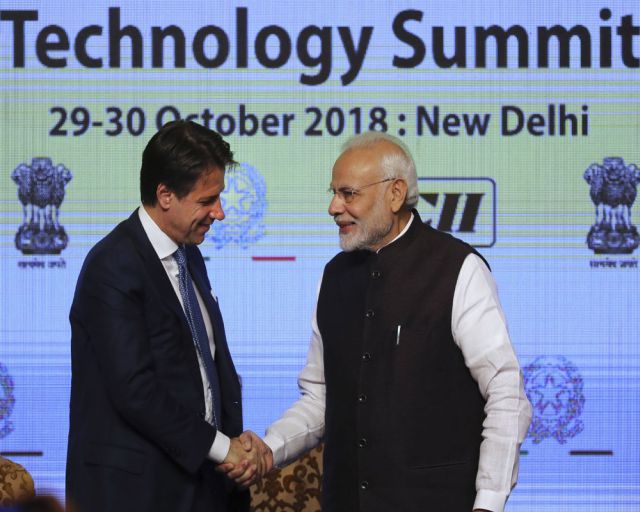
by admin | May 25, 2021 | Business Summit, Corporate, Corporate Governance, Economy, Events, Investing, Markets, News, Politics
 New Delhi : India and Italy on Tuesday agreed to fast-track bilateral trade and investments and set up a bilateral industrial development and cooperation mechanism at a meeting between Prime Minister Narendra Modi and his Italian counterpart Guiseppe Conte here.
New Delhi : India and Italy on Tuesday agreed to fast-track bilateral trade and investments and set up a bilateral industrial development and cooperation mechanism at a meeting between Prime Minister Narendra Modi and his Italian counterpart Guiseppe Conte here.
“In order to give an impetus to enhanced economic cooperation between India and Italy, it was decided to set up a CEO Forum guided by a Joint Commission on Economic Cooperation (JCEC),” Modi tweeted following the meeting.
“To increase two-way investments, we have decided to create a fast-track mechanism,” he said.
The Indian Prime Minister said both sides have decided to boost ties in key sectors such as lifestyle accessories design, transportation and automobile design, energy, and life sciences.
According to a joint statement issued following the meeting, both sides agreed on the need for an institutional framework for a sustained dialogue to enhance the environment for ease of doing business in their countries and further facilitate and promote bilateral economic cooperation.
“To take this forward, the leaders tasked the JCEC to work towards constituting a CEO Forum and setting up a fast-track mechanism to promote two-way investments, and resolve issues, if any, confronted by the businesses in each other’s country,” the statement said.
India is Italy’s fifth largest trading partner in the European Union while Italy is the fifth largest investor in India.
The India-Italy trade stood at $10.5 billion in 2017-18, up from $8.8 billion in the previous fiscal.
Conte, who assumed office in June, arrived here earlier on Monday to take part in the India-Italy Technology Summit organised by industry chamber CII in collaboration with India’s Department of Science and Technology (DST) and the Italian government.
Lauding Italy’s rich tradition of scientific research and its reputation in manufacturing during the course of his valedictory address at the summit, Modi said the two sides can cooperate in devising technological solutions for industry.
“We have also decided to set up various Indo-Italian Centres of Excellence. Business and industry of both countries are already cooperating in bringing cutting edge technology in various sectors and can cooperate fruitfully in areas like renewable energy, neurosciences and IT,” he said.
In his address, the Italian Premier said Italy’s participation as partner country in this edition of DST’s Technology Summit has a special symbolism coming on the 70th anniversary of diplomatic relations between Italy and India.
“Innovation can be a catalyst for more inclusive growth and globalisation should not leave anyone behind,” Conte said.
“The common goal of our two governments is to be strategic partners in innovation,” he said, adding the whole gamut of bilateral relations had been reviewed in his talks with Modi.
According to the joint statement, Modi and Conte expressed their commitment to strengthening the India-EU economic partnership and noted the ongoing efforts of both sides to reengage actively towards an early resumption of negotiations for a comprehensive, balanced and mutually beneficial India-EU Broad Based Trade and Investment Agreement (BTIA).
Negotiations for the BTIA started in 2007 but were put on hold in 2015. In all, 16 rounds of negotiations have been held.
After India renounced its bilateral investment treaties (BITs) with all countries, investments from European nations are now not protected.
India has terminated all BITs following a new BIT model New Delhi released in December 2015.
The 28 EU member-states have now passed on the responsibility of investment protection negotiations to the EU.
Both sides also recognised the need to broad-base defence ties.
“India invited Italian defence equipment manufacturing companies to invest in India under the Make in India initiative and to collaborate with Indian companies for design and construction of defence equipment,” the statement said.
This assumes significance given that India cancelled the contract with Italian firm Finmeccanica’s British subsidiary AgustaWestland for supplying 12 AW-101 VVIP choppers to the Indian Air Force, over alleged breach of contractual obligations and on charges of paying kickbacks amounting to Rs 423 crore.
During their meeting, Modi and Conte also agreed to strengthen counter-terrorism cooperation through multilateral fora.
“The leaders asserted that strong measures need to be taken against terrorists, terror organisations and all those who encourage, support and finance terrorism,” the joint statement said.
“They condemned all kinds of state support to terrorists including cross border terrorism and providing safe havens to terrorists and their network,” it stated in what can be seen as a veiled reference to Pakistan.
—IANS
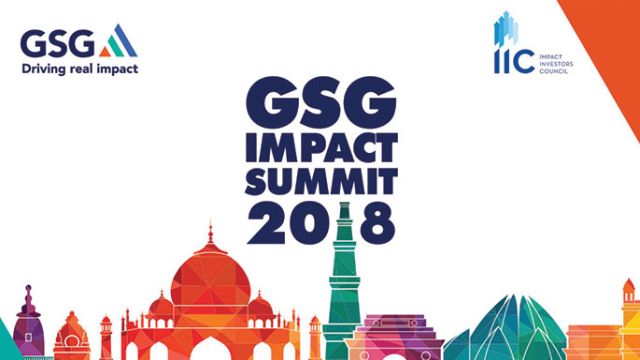
by admin | May 25, 2021 | Business Summit, Events, Investing, Opinions
 By Ravi Saraogi,
By Ravi Saraogi,
The Global Steering Group for Impact Investments (GSG) launched a billion-dollar India Impact Fund at a summit held in Delhi last week. The fund will focus on providing debt capital to social enterprises in development sectors like finance, health, education and renewable energy.
By channelling private debt capital to these sectors, the fund will play an important role in increasing the pool of resources for solving social issues.
Such socially-conscious investments which not only target a financial return but also social change is called impact investing. GSG, an independent global body based out of the UK, works on promoting such impact investments.
The fund is a unique initiative in two respects. It aims to drive social change by attracting private capital to sectors where the predominant source of funding is through government budgetary resources. Also, it is focused on making debt investments rather than equity investments at a time when most of the $5.2 billion of impact investments made in India over the last six years have exclusively focused on equity.
Rather than directly providing debt capital to social enterprises, the fund will set itself up as a debt wholesaler by either establishing a Non-Banking Financial Company (NBFC) which will then lend to social enterprises or investing in other debt impact funds. This structure will enable the fund to attract a larger sum of capital in the debt impact space through leverage and multiplier effect.
The NBFC can, for example, leverage through market borrowings on the capital provided by the fund. Similarly, investment by India Impact Fund in other local debt impact funds can crowd-in further investments from other investors.
GSG, in its study on such structures across the world, estimates that multiplier effect of a debt wholesaler can be as high as two. Thus, for every dollar the India Impact Fund invests, it can catalyse another dollar of debt investment from other investors.
The equity focus of impact investments till date is not surprising due to two reasons. First, providing debt to social enterprises in the absence of developing tailor-made evaluation criterion for them could be risky and very few institutions have invested in developing such criteria.
Secondly, in the absence of own evaluating criteria, investors rely on external credit ratings and most social enterprises are either unrated or get very low credit rating. The low ratings of social enterprises may not necessarily be because they carry higher credit risk. It is mostly due to the fact that they have unique and thus less understood business models.
Also, they mostly operate in sectors where the traditional route for carrying out social change is through charity and hence there is a tendency to look at social enterprises as non-viable. Doubts on whether social enterprises can borrow and repay are further reinforced as most of them are start-ups or have low vintage.
Several social enterprises have proved that these concerns are unwarranted. Like microfinance showed that being poor does not necessarily mean being uncreditworthy, and microfinance institutions showed that being a social enterprise does not necessarily mean being unviable.
Starting small, several microfinance institutions today are listed at the stock exchange. There are several such examples in other sectors.
A debt wholesaler who understands the nuances behind social enterprises can develop tailor-made underwriting standards for evaluating social enterprises and provide them debt capital. The India Impact Fund, as an initiative of the impact community, can invest in developing expertise around evaluation of social enterprises in different sectors – health, education, climate, access to finance, and other impact areas.
With the backing of large domestic and international impact investors, it can emerge as the pre-eminent impact debt wholesaler in India. The fund can also play an important role in developing India’s debt capital markets.
The outstanding value of corporate bonds in India is 1.6 per cent of GDP — the comparable number for the US is nearly 20 per cent . Close to 85 per cent of the bond issuances in India carry a rating of AAA or AA, leaving a large number of institutions with low ratings out of the debt market.
Thus, not only do we have a small debt capital market, the market is also lop-sided towards large and high rated institutions. By encouraging low rated enterprises to issue debt, the fund will not only increase the size of the debt markets but also widen its penetration to lower rated bonds.
The India Impact Fund comes at an opportune time. Impact investments in India have gained critical mass over the years and is poised to grow rapidly. The growing importance of India in the impact investment landscape is highlighted by the fact that the GSG held its Impact Summit 2018 in Delhi.
(Ravi Saraogi, CFA, is Head of Investor Relations & Products at Northern Arc Investments, Chennai. He can be reached at ravi.srg@gmail.com)
—IANS
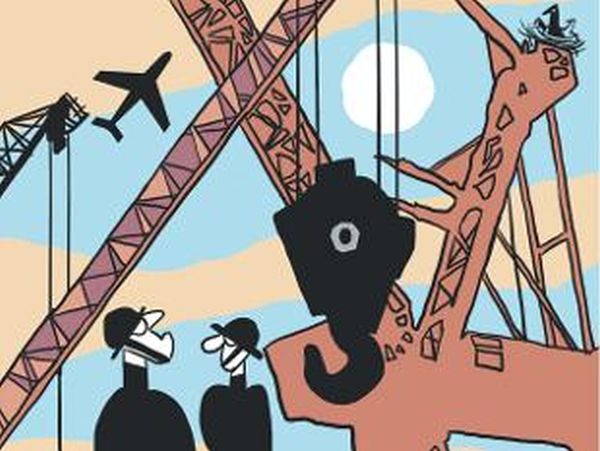
by admin | May 25, 2021 | Investing, Opinions
 By Taponeel Mukherjee,
By Taponeel Mukherjee,
De-risking infrastructure projects is critical to increase the flow of capital into infrastructure in India and lower the cost of capital. De-risking of projects can be accomplished using both external and internal mechanisms.
External de-risking essentially involves risk-transfers that allow the risk to be divided up in such a way that the best-equipped agent manages each suitable component of the risk. External risk management can be through guarantees such as a political risk guarantee from the Multilateral Investment Guarantee Agency (MIGA) or a partial credit guarantee from multilateral institutions such as the Asian Development Bank (ADB) to protect lenders partially against loan defaults.
External de-risking is also possible through the utilisation of financial instruments such as interest-rate swaps. For example, an interest-rate swap allows a bond investor to invest in the spread risk between the bond versus the swap rate, hedging away the outright interest rate exposure through utilisation of the interest-rate swap.
External de-risking allows counterparties to undertake risk in the component of the capital structure that they can manage best while hedging and transferring the risks they are not equipped to handle. Suck risk-management mechanisms also help bring down the cost of capital.
A specialist risk-manager has the expertise to manage risk and a diversified portfolio that allows him or her to charge the correct risk premium. In markets where such de-risking instruments are not available, counterparties not entirely suitable for managing the various components of the risk, charge a risk-premium that is higher than what a specialist would charge. The counterparties not suited to managing the risk charge a high enough risk premium to mitigate risks that they are not adequately equipped to handle, thereby raising the cost of capital. Therefore, effective external de-risking mechanisms are essential to facilitate infrastructure creation.
While external de-risking mechanisms help in risk transfers, the inherent risk in projects remains unchanged. Internal de-risking is also required to help reduce the risk associated with the project, thereby bringing down the cost of capital.
Internal de-risking is done through mechanisms that give investors more clarity about project cash flows. Clarity around cash flows comes from a system of infrastructure assets that are in sync and deliver value.
In layman’s terms, an airport asset becomes more attractive as road access from the surrounding area improves — i.e., as the radius of the region around an airport has easier and faster access to an airport asset, the airport has the potential to attract a larger pool of users. Therefore, enabling infrastructure such as roads to access the airport allows for airport investors to see both higher and clearer cash flows from the airport, helping investors view the asset as less risky and lowering the cost of capital.
Internal de-risking helps improve the “quality of the projects” by creating the supply chain of infrastructure projects that allow investors to earn financial returns with more clarity. The key to internal de-risking is ensuring that linkages within the infrastructure assets are created and financed effectively. Detailed planning and analysis is required to ensure that assets do not get stranded due to poor planning.
The long-dated nature of infrastructure investments means that long-term planning of the infrastructure eco-system is critical for de-risking assets. Policy clarity also has a significant role to play in the internal de-risking of assets. Effective policy framing and ground-level execution in, say, power transmission assets will help not only de-risk them but will also make energy generation assets that much more attractive and vice versa. Therefore, it is critical that the holistic picture is considered when planning and financing infrastructure.
In summary, de-risking infrastructure projects is right at the top of the agenda for all involved. While investors are keen to deploy capital in a high-growth economy, the public is eager to get access to better and higher quality infrastructure. De-risking infrastructure will help each rupee invested in creating more impact. A lower cost of capital through de-risking will allow India to create the critical mass of infrastructure in the years to come.
(Taponeel Mukherjee heads Development Tracks, an infrastructure advisory firm. The views expressed are personal. He can be contacted at taponeel.mukherjee@development-tracks.com or @Taponeel on Twitter)
—IANS
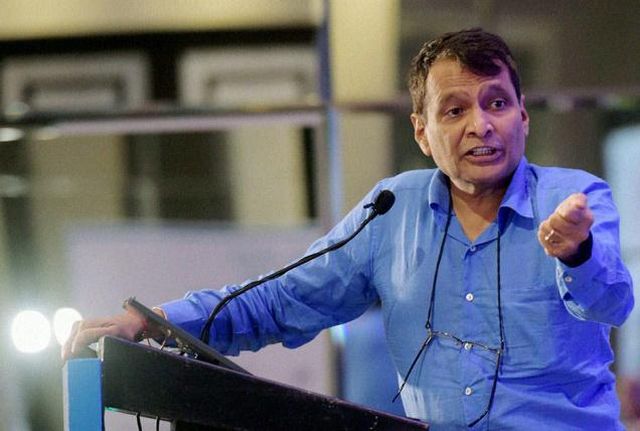
by admin | May 25, 2021 | Business, Business Summit, Corporate, Corporate Buzz, Economy, Emerging Businesses, Events, Investing, Large Enterprise, News

Suresh Prabhu
New Delhi : The Indian government on Monday invited Omani companies to invest in India and benefit from Make in India programme aimed to encourage manufacturing, an official statement said.
The invitation was made by Commerce Minister Suresh Prabhu during the 8th India-Oman Joint Commission meeting in Muscat, where he highlighted several steps taken by the government to promote an investment-friendly environment in India, the Commerce Ministry statement said.
“India has launched several investment friendly programmes like Make in India with a trillion dollar business opportunity in the country,” he said, according to the statement.
“Participated in the India Oman Joint Commission Meeting today (Monday). Had very positive discussions on areas of mutual cooperation and growth like space, renewable energy, Startups, SMEs, Food security, tourism and services sector,” Prabhu tweeted.
“The Sultanate of Oman is a strategic partner of India in the Gulf. India’s major exports to Oman include petroleum (crude & products),basmati rice, iron and steel, ceramics, electronic components, etc. and it imports petroleum products, spacecraft & parts,bulk minerals, ores etc,” he said in another tweet.
Bilateral trade between India and Oman has increased to $6.7 billion in 2017-18 from $4.13 billion in 2014-15.
Indian financial institutions such as the State Bank of India, Bank of Baroda, HDFC and ICICI Securities, as well as public sector undertakings like Air India, Life Insurance Corporation, Telecommunications Consultants India, Engineers India and National Building Construction Company (NBCC) have their presence in Oman.
“India-Oman Joint Investment Fund, a joint venture between State Bank of India and State General Reserve Fund of Oman, a special purpose vehicle to invest in India, has been operational and the initial corpus of $100 million has been fully utilized,” the ministry said.
The joint investment fund has raised another $220 million in the second tranche which is being invested, it added.
—IANS





